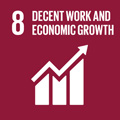- Docente: Chiara Ceccarini
- Credits: 6
- Language: Italian
- Moduli: Chiara Ceccarini (Modulo 1) Nicolò Sordoni (Modulo 2)
- Teaching Mode: Traditional lectures (Modulo 1) Traditional lectures (Modulo 2)
- Campus: Cesena
- Corso: First cycle degree programme (L) in Computer Systems Technologies (cod. 6007)
-
from Feb 17, 2025 to Mar 17, 2025
-
from Mar 03, 2025 to May 26, 2025
Learning outcomes
At the end of the course, the student knows the fundamental tools for the development of applications for mobile devices, both native, and hybrid. In particular, the design and programming of the architecture and graphical interface of high-performance mobile applications, capable of communicating with the hardware (such as sensors) and software components of the device will be considered.
Course contents
Native Development
- Android and iOS Platforms
- Elements of Kotlin, the reference language for Android programming
- Elements of Swift, the reference language for iOS programming
- MVVM Patterns
- Jetpack Composer and SwiftUI
- Data Management within the App
Cross-Platform Development
- Overview of Cross-Platform Methodologies and Introduction to Flutter
- Elements of Dart, the reference language for Flutter development
- Basic Widgets and Layouts
- Navigation Management
- Bloc: State Management Library in a Flutter App
- Networking and Data Persistence
- Animations
Readings/Bibliography
Given the speed with which the mobile world changes and updates, there are no recommended texts. It is therefore recommended to use the material provided by the teachers and present on Virtuale.
Regarding Flutter, it is recommended to consult the official documentation: https://docs.flutter.dev/
Teaching methods
- Lectures
- Exercises in lab
Considering the type of activity and the teaching methods adopted, attendance of this training activity requires the prior participation of all students in modules 1 and 2 of training on safety in the workplace, in e-learning mode [https://corsi.unibo.it/laurea/TecnologieSistemiInformatici/formazione-obbligatoria-su-sicurezza-e-salute]
Assessment methods
The exam consists in the development of a project, in small groups (2-3 students), and a corresponding presentation/discussion (e.g., in oral form). The evaluation will be based on the internal and external quality of the project, in relation to the course objectives, and on the effectiveness of the presentation.
Teaching tools
Slides provided by the professors and made available on the course website on Virtuale.
Office hours
See the website of Chiara Ceccarini
See the website of Nicolò Sordoni
SDGs



This teaching activity contributes to the achievement of the Sustainable Development Goals of the UN 2030 Agenda.
